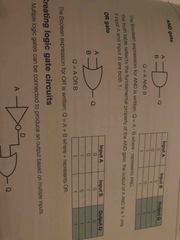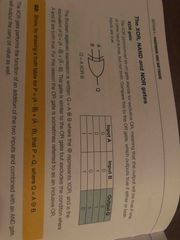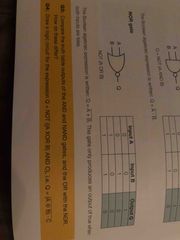![]()
![]()
![]()
Use LEFT and RIGHT arrow keys to navigate between flashcards;
Use UP and DOWN arrow keys to flip the card;
H to show hint;
A reads text to speech;
20 Cards in this Set
- Front
- Back
|
System Software |
Software needed to run the computers hardware and application programs. |
|
|
Operating system |
Resource management - managing all the computer hardware Provision of user interface (windows) to enable users to perform tasks such as running programs. |
|
|
Utility Programs |
System software designed to optimise the performance of the computer or tasks such as backing up files, restoring corruption, etc. |
|
|
Libraries |
Ready-compiled programs which can be run when needed. |
|
|
Application Software |
Specific user-oriented task: General-purpose software - word processor, spreadsheet, etc. Special-purpose software - performs a single specific task or set of tasks. |
|
|
Machine code |
First bits - holds an opcode Last bits - holds an operand |
|
|
First high-level language |
FORTRAN |
|
|
Advantages of high-level languages |
- easy to learn - easier and faster to write - easier to understand - built in library functions |
|
|
Assembler |
Converts assembly language (source code) into machine code (object code) |
|
|
Compiler |
Translates high-level code into machine code. |
|
|
Interpreter |
Looks at high-level code line by line and, if there are no syntax errors, calls a subroutine to execute the command. |
|
|
Bytecode |
A result of high-level languages being compiled and interpreted at once (intermediate) which is executed by a bytecode interpreter. |
|
|
Advantages of bytecode |
Platform independence - the java virtual machine in a computer understands bytecode and converts it to machine code. Acts as extra security between a computer and a program. |
|
|
Compilers vs interpreters |
C - there’s no need to recompile after closing a program unless an error is found. C - object code executes faster. C - object code is more secure. I - useful for program development as there is no lengthy recompilation when errors are found. I - easier to debug programs. |
|
|
NOT gate |
-|>o- 1-0 0-1 Ā (not A) |
|
|
AND gate |
=D- 0 0 , 0 1 , 1 0 = 0 1 1 = 1 A • B |
|
|
OR gate |

Back (Definition) |
|
|
XOR gate |

Back (Definition) |
|
|
NAND gate |
=Do- 0 0 , 0 1 , 1 0 = 1 1 1 = 0 |
|
|
NOR gate |

Back (Definition) |

